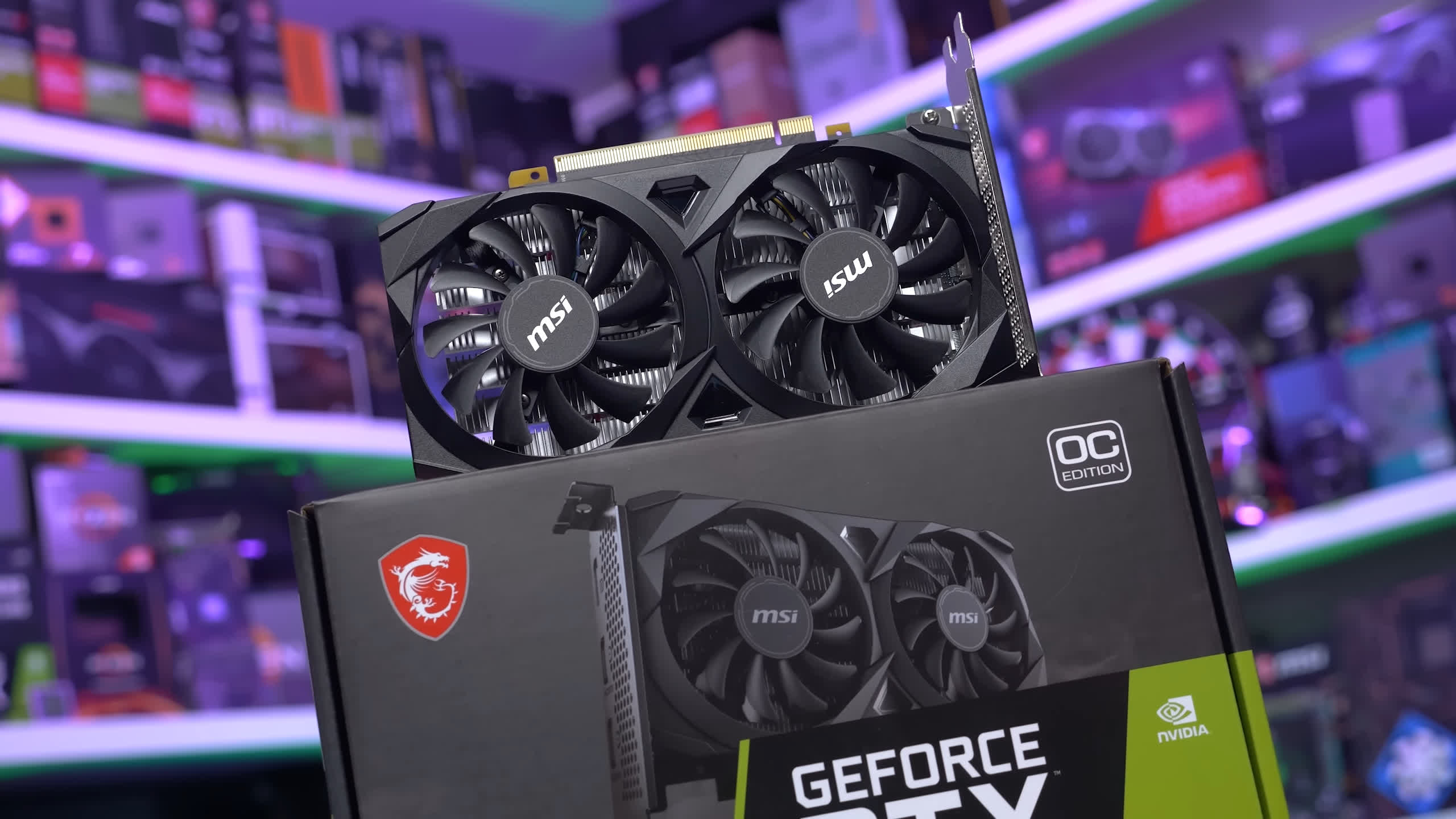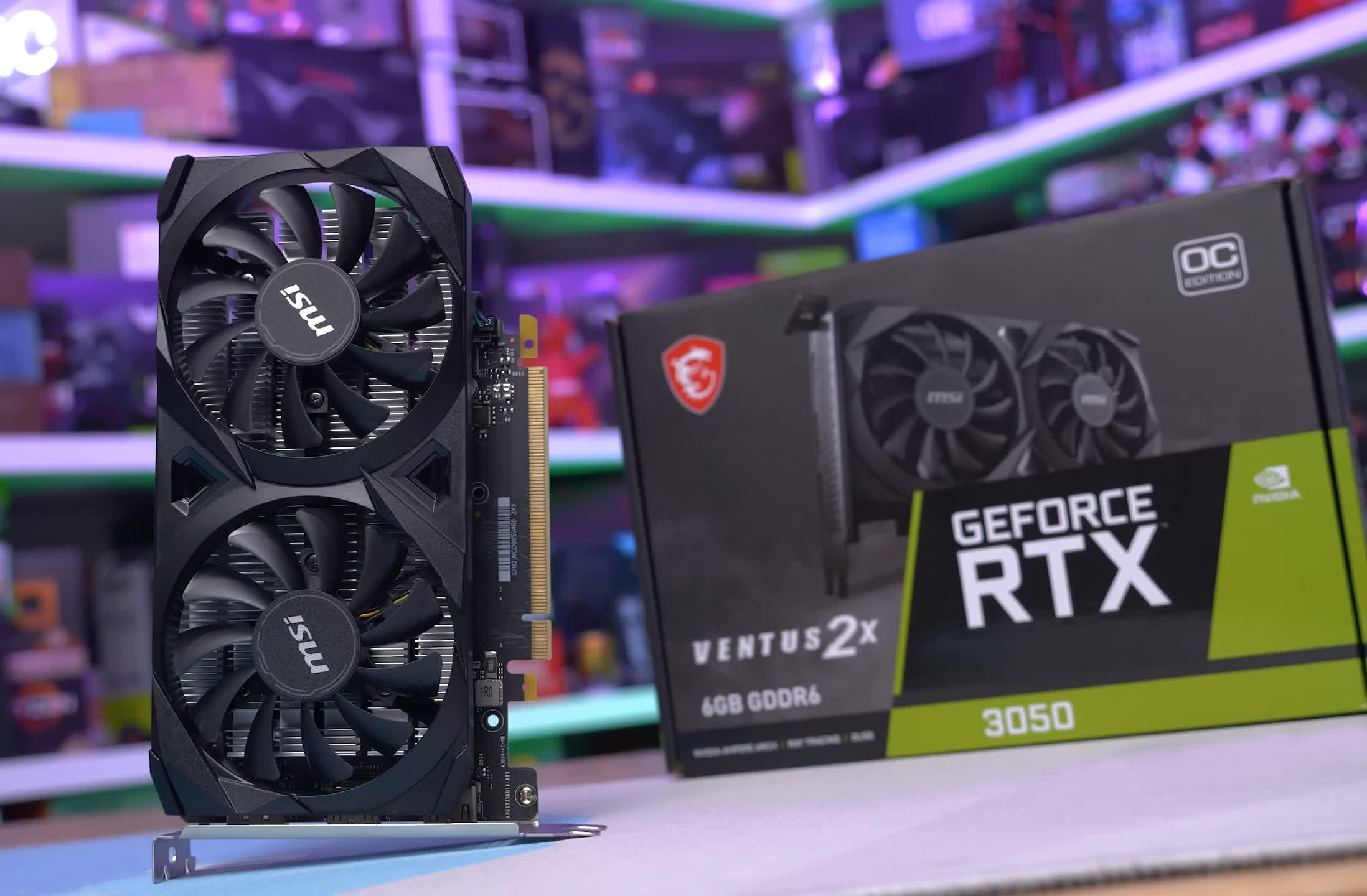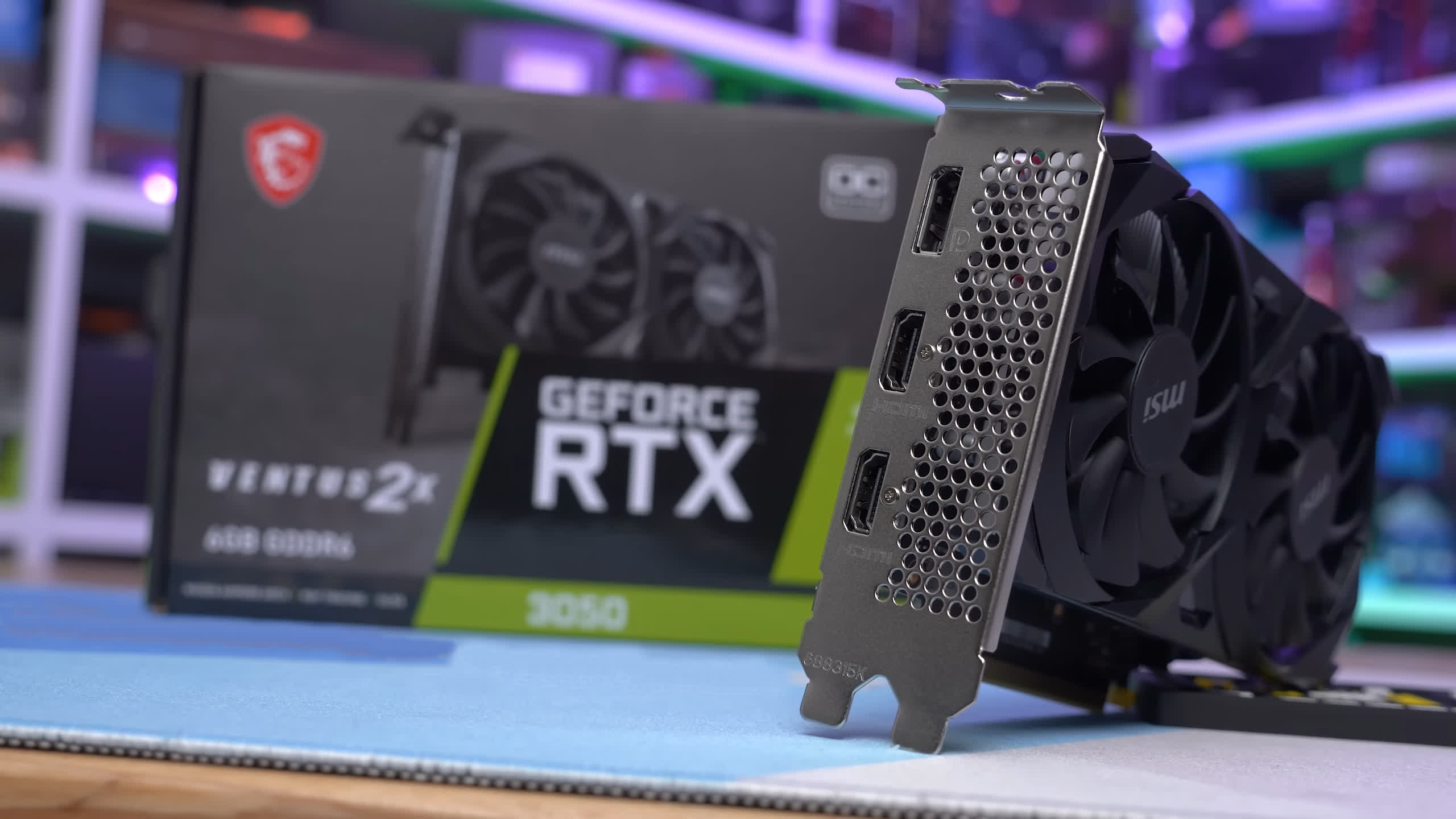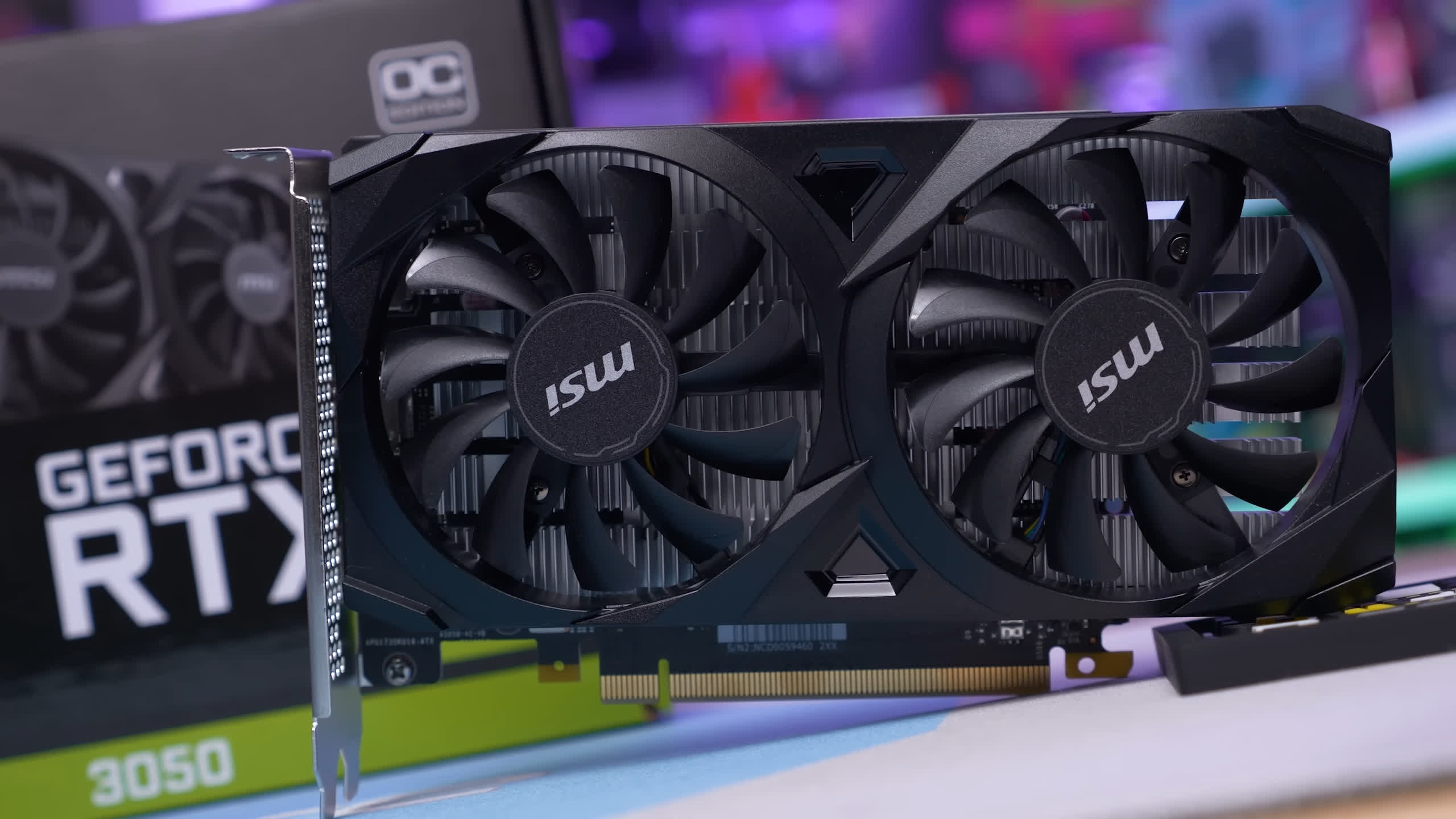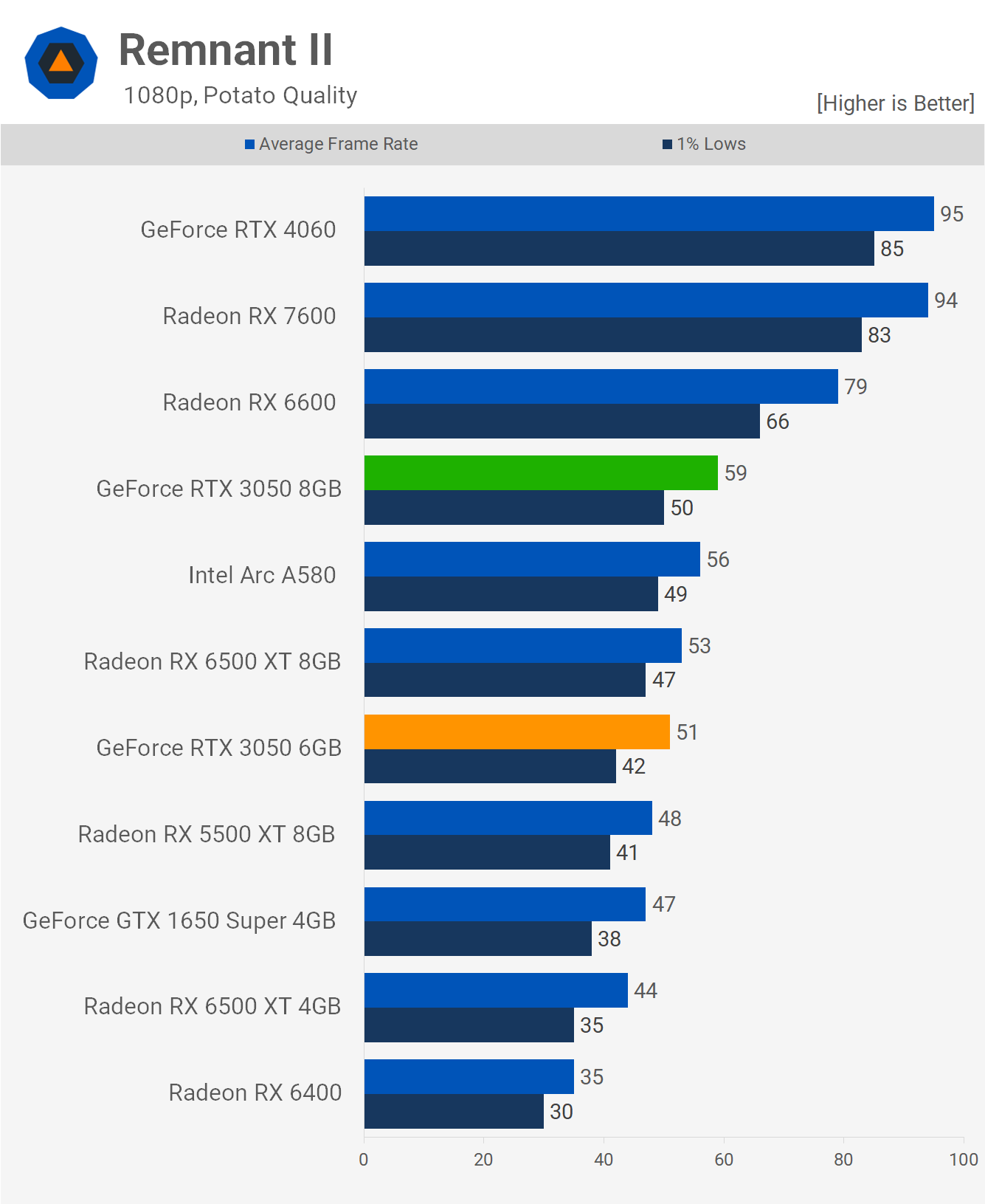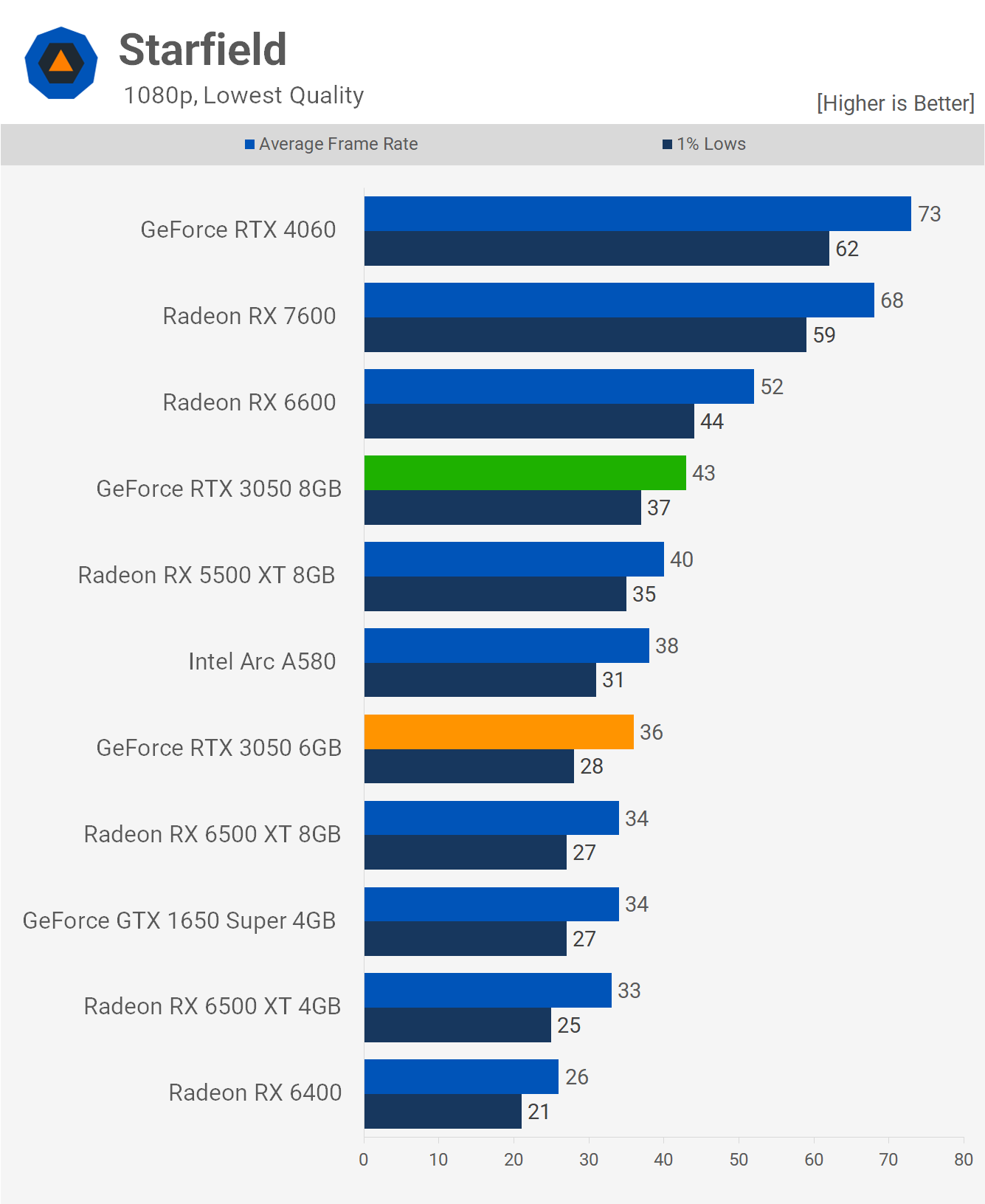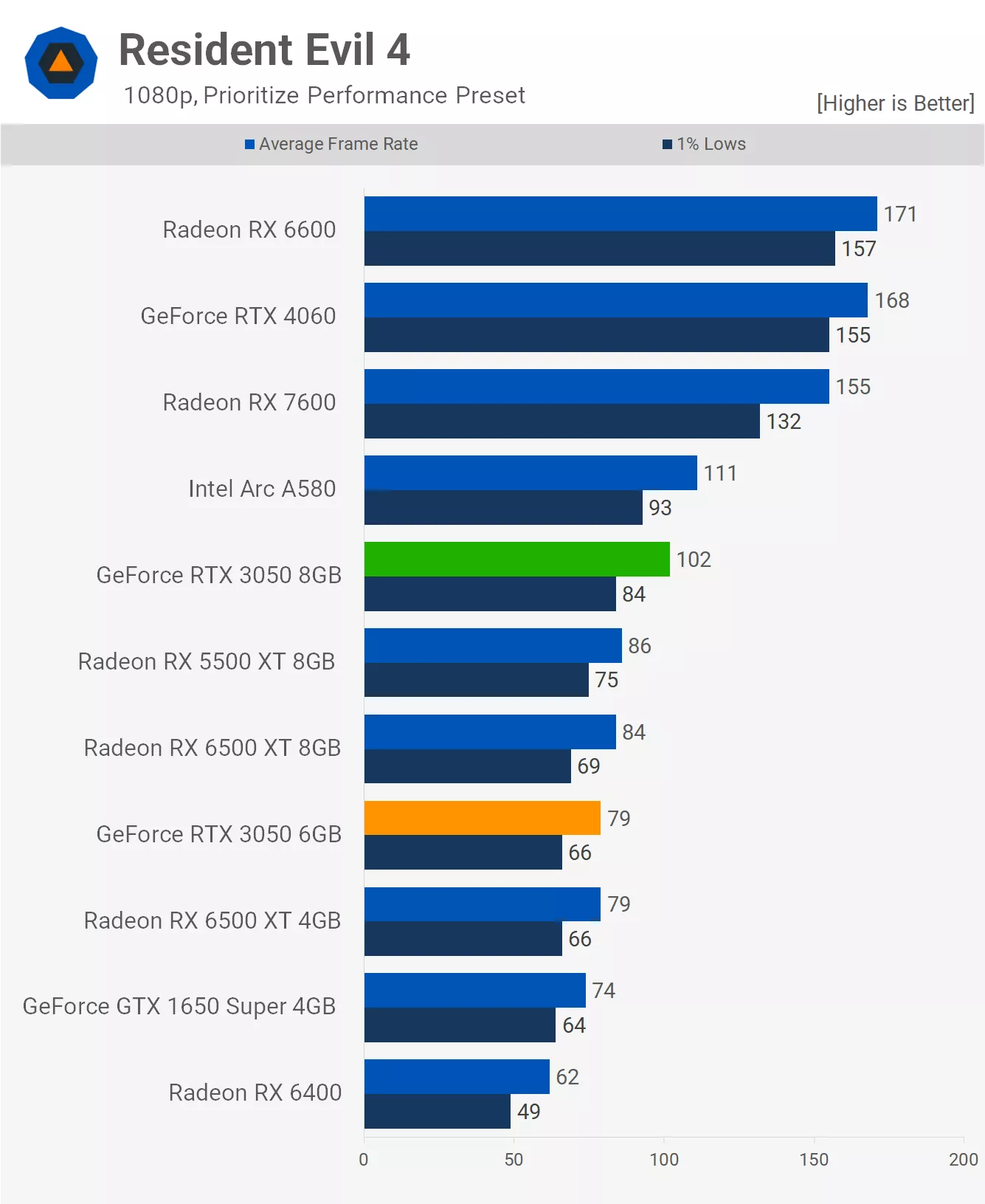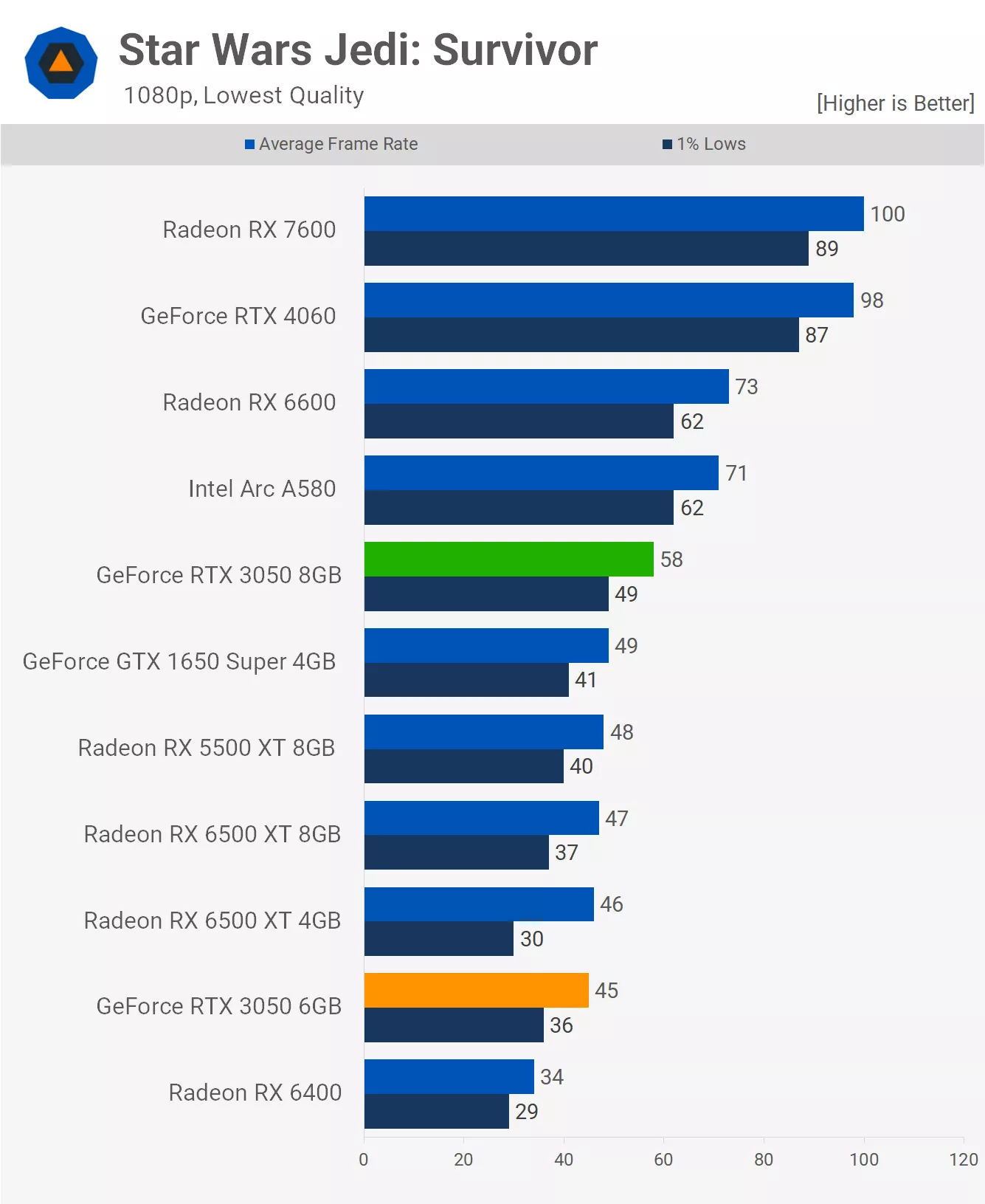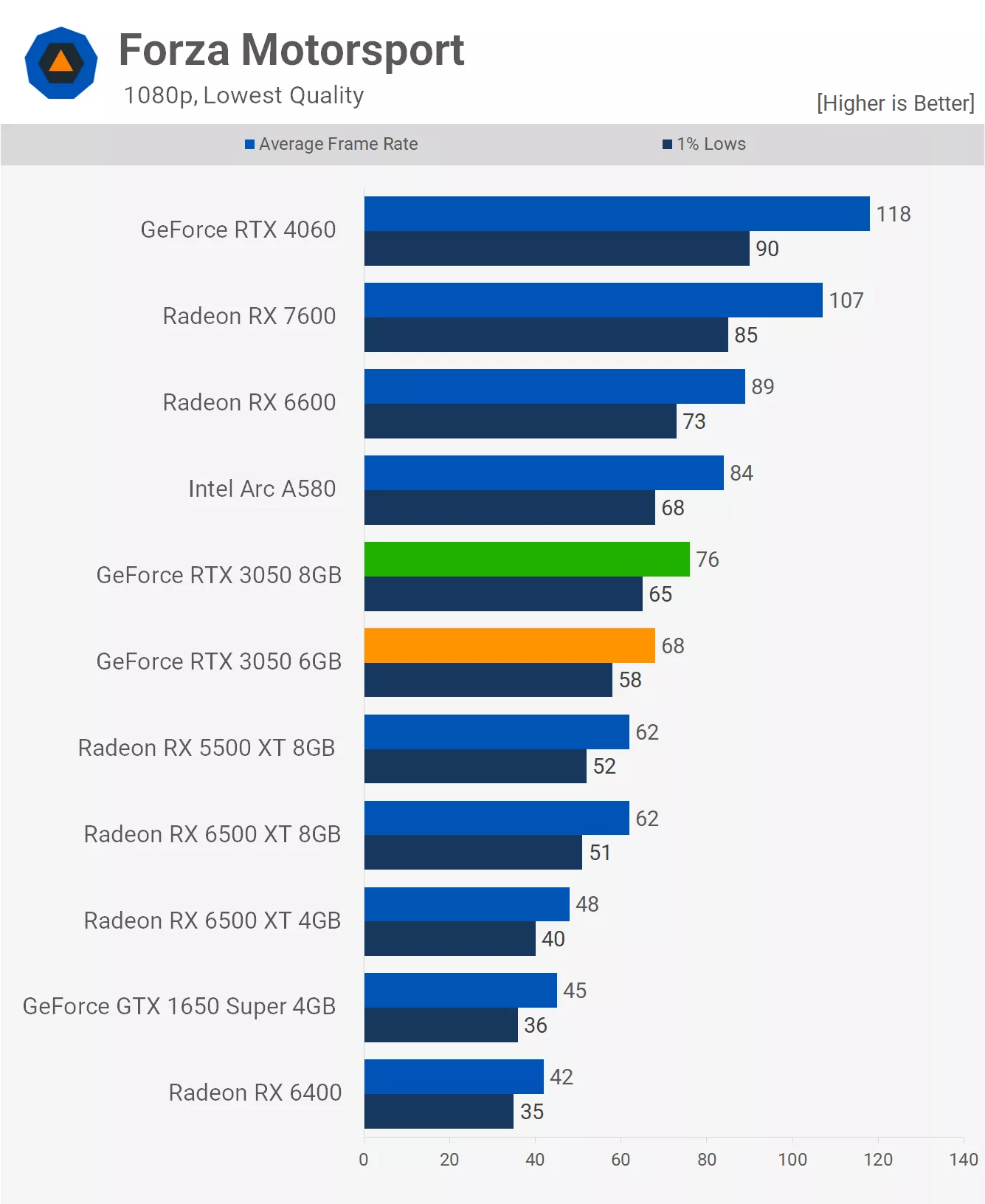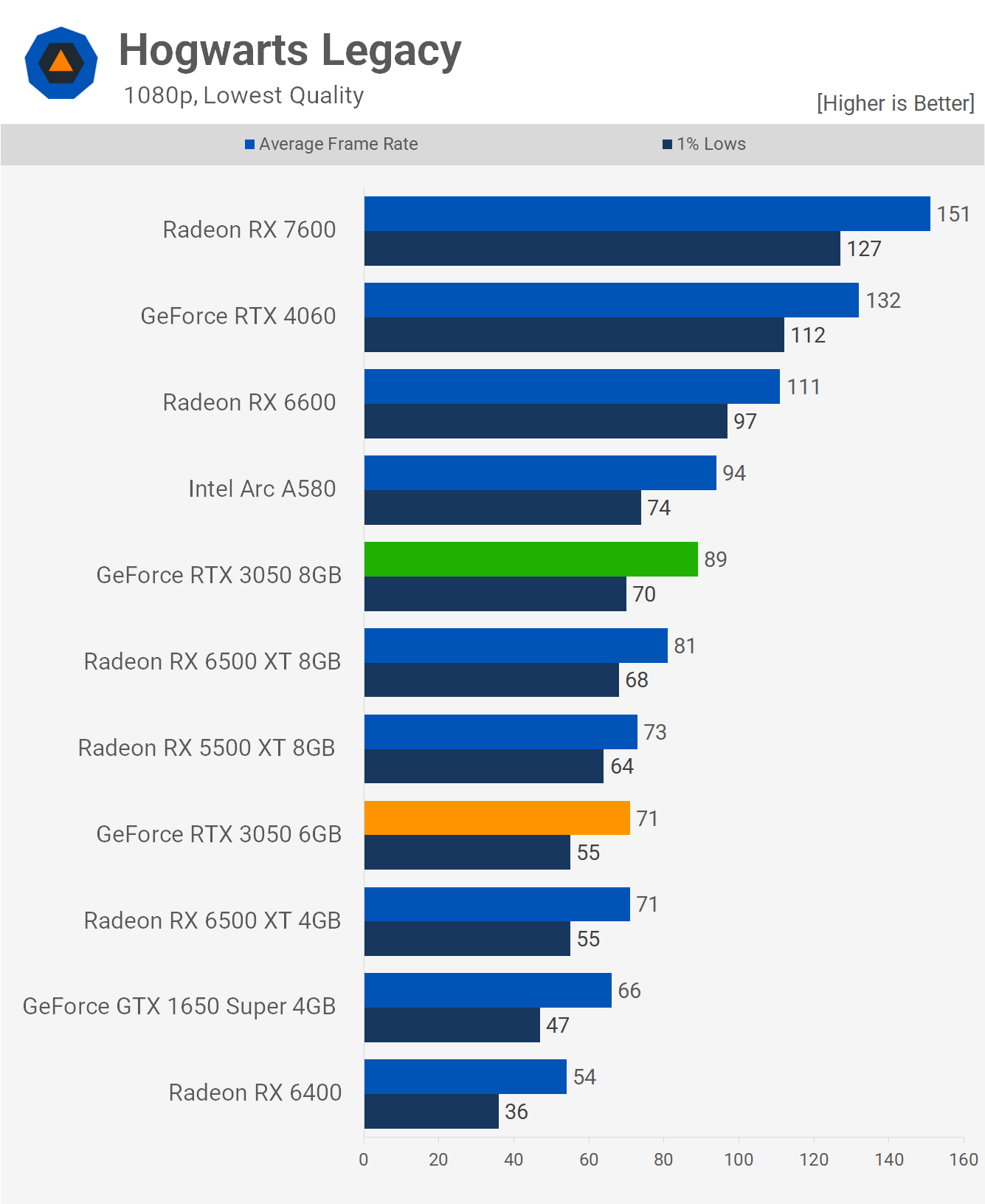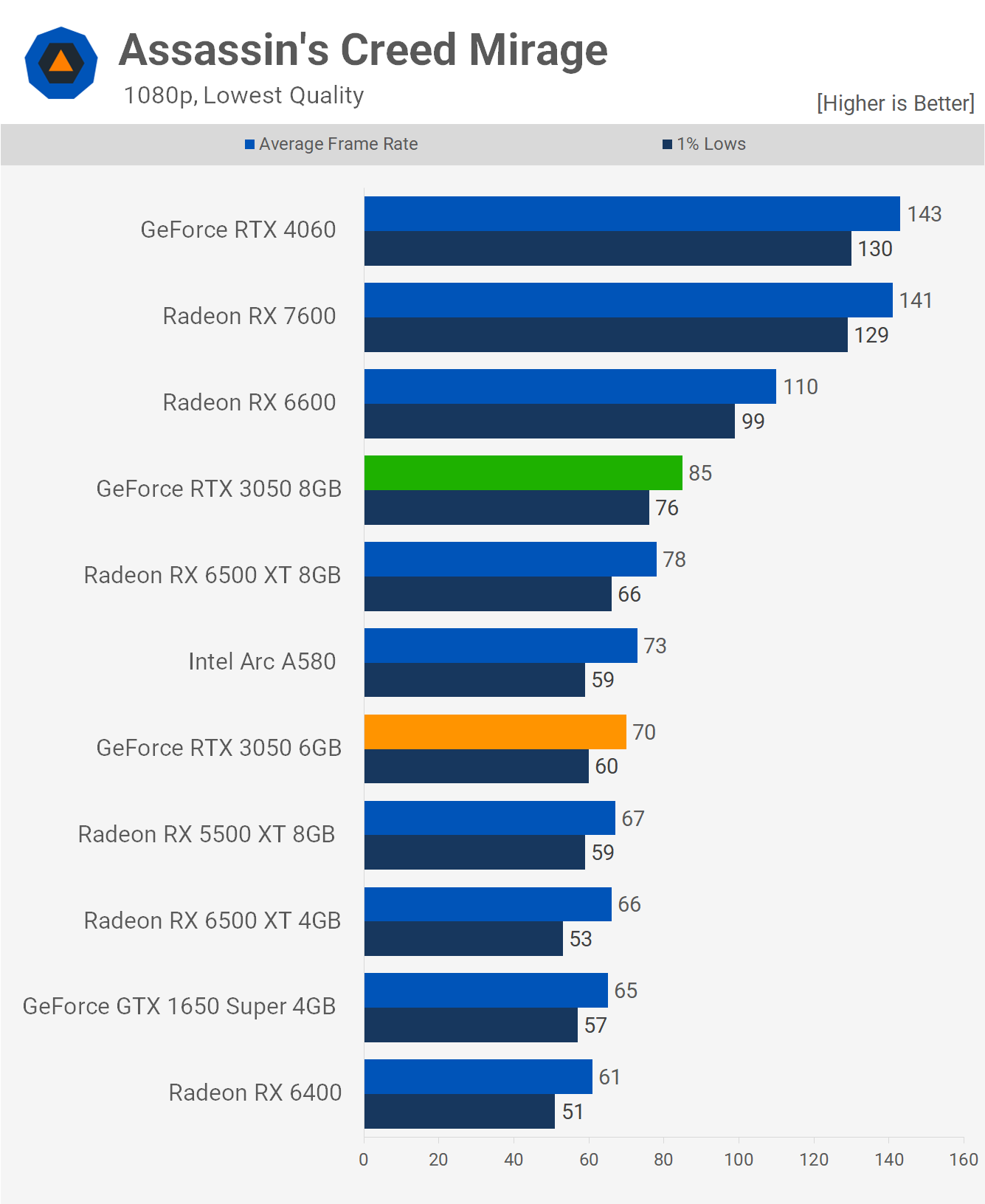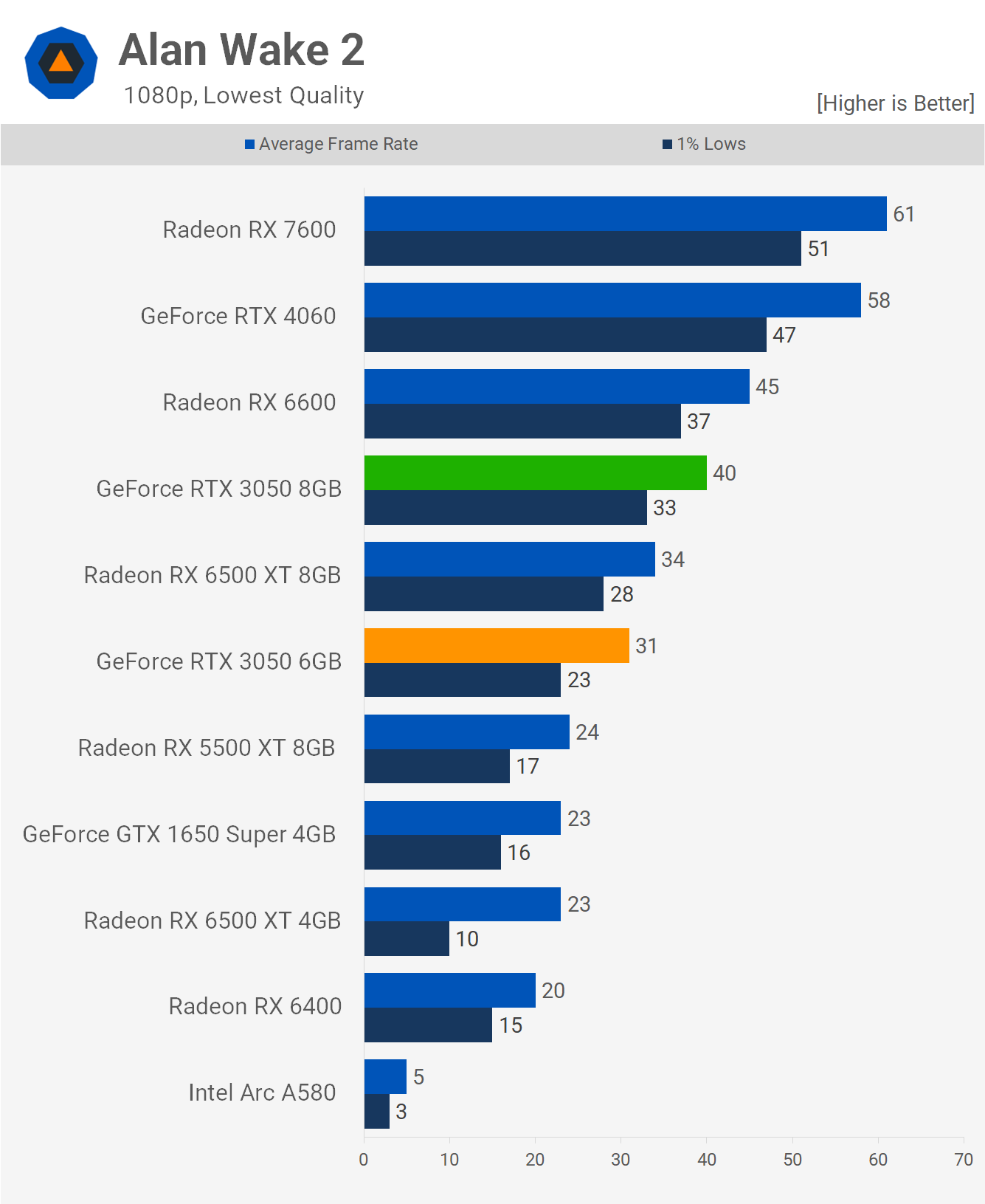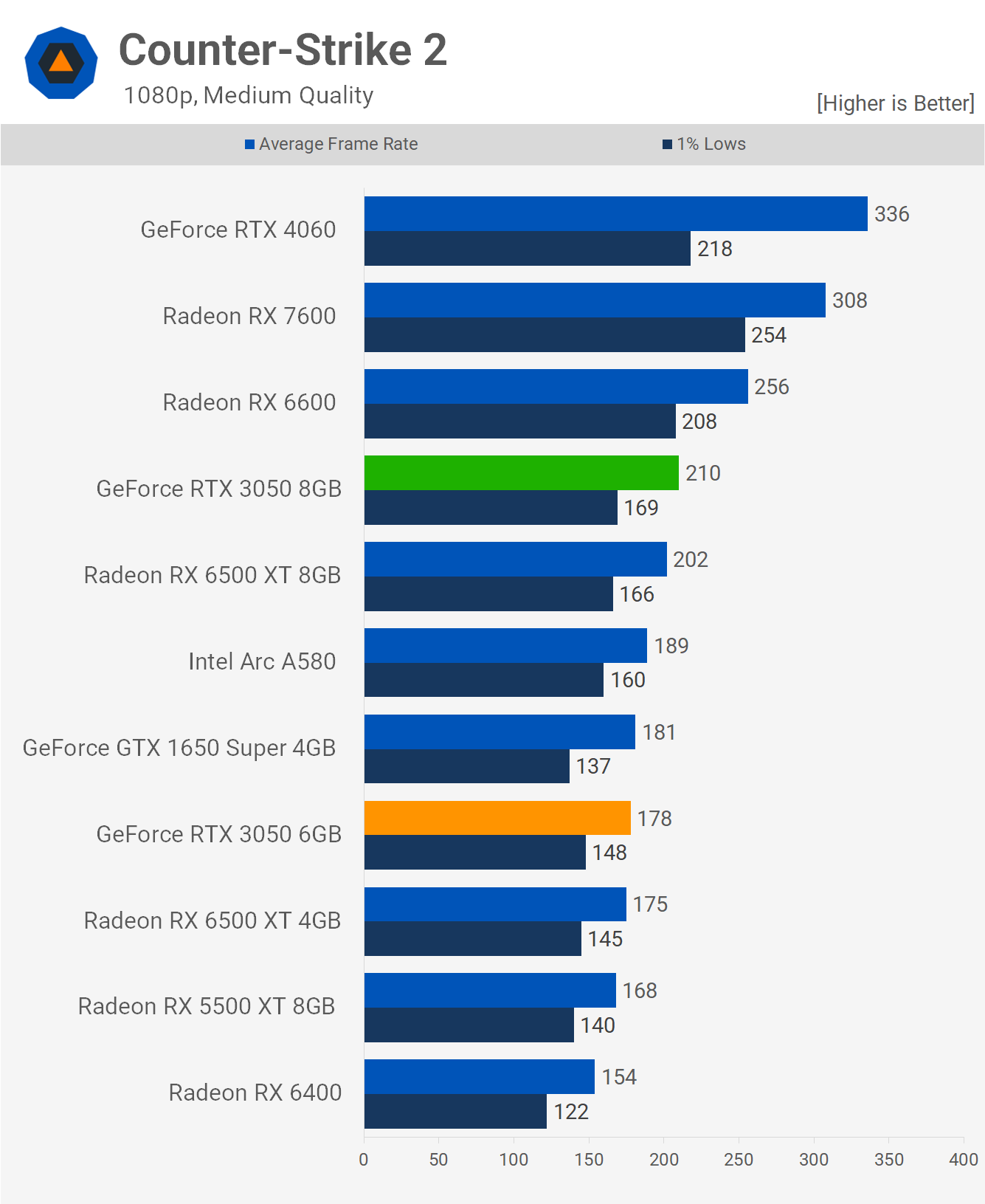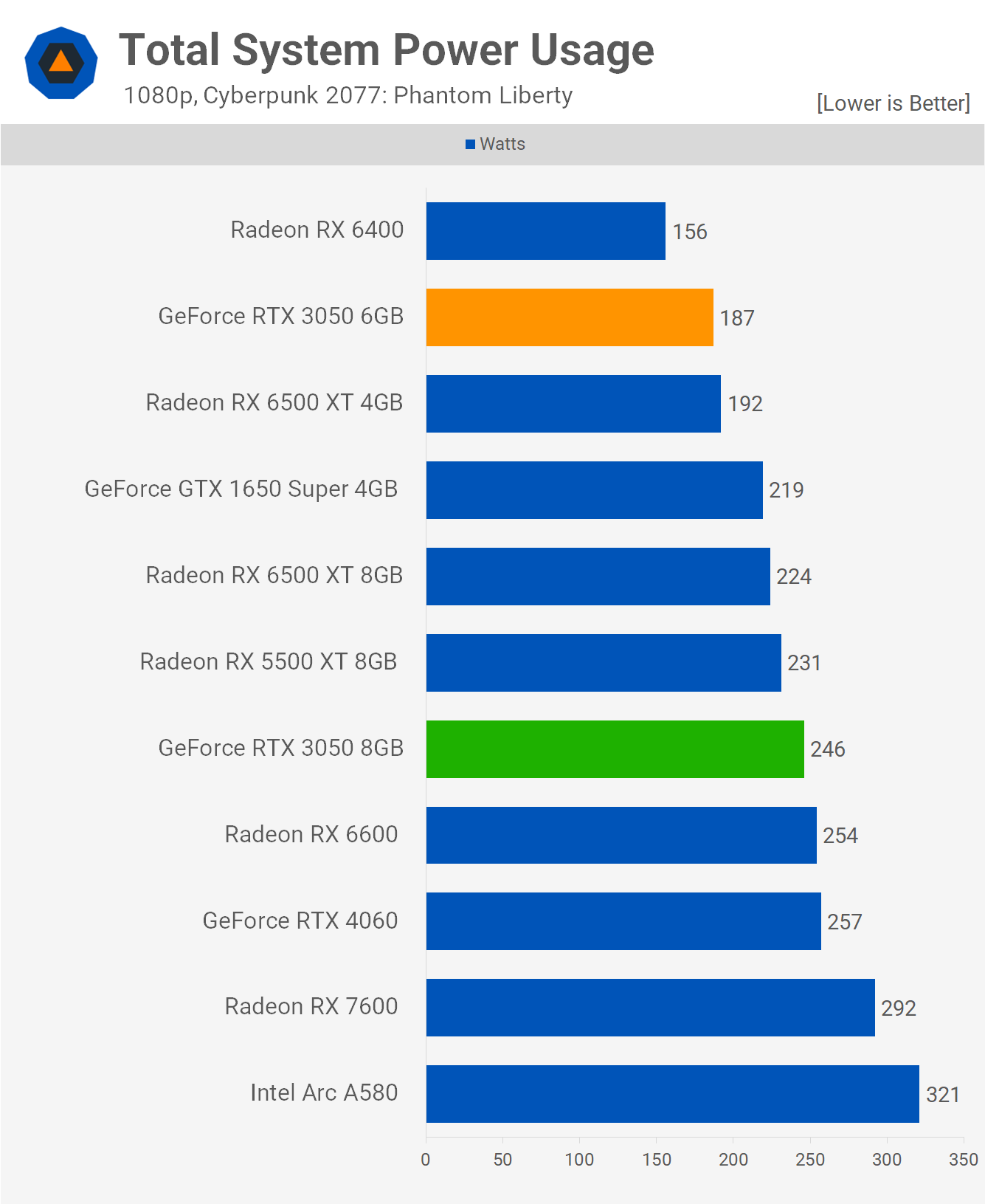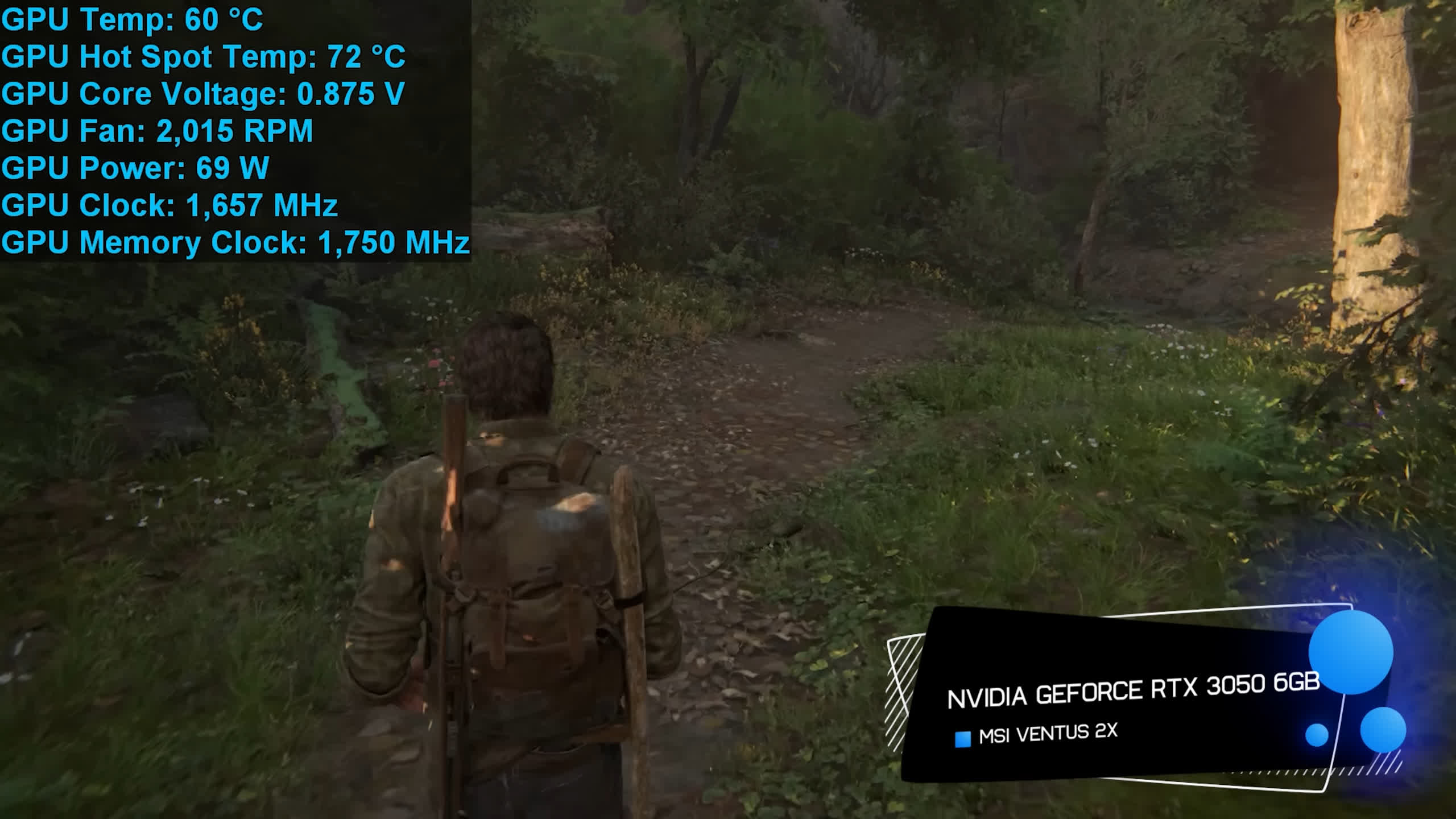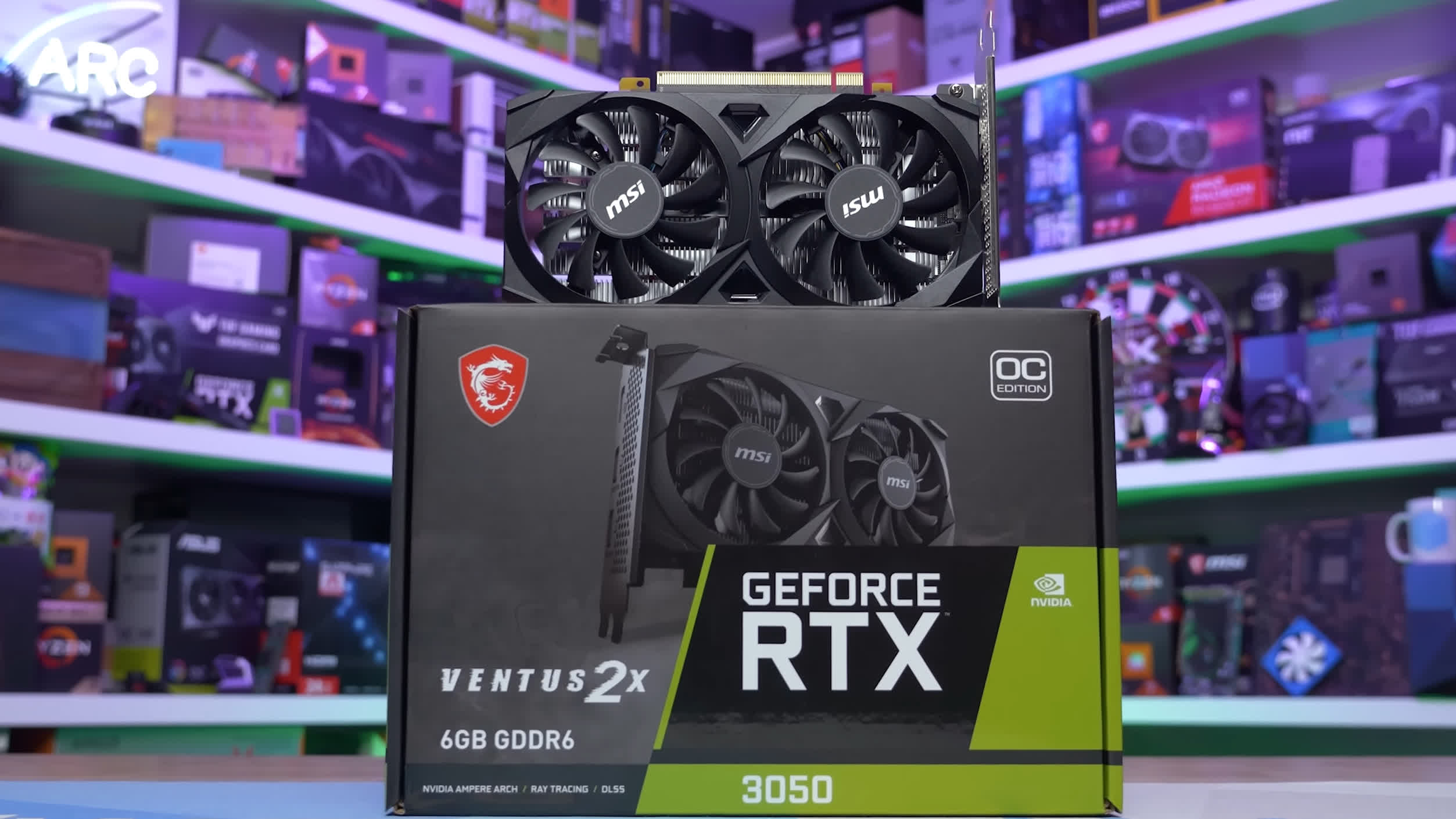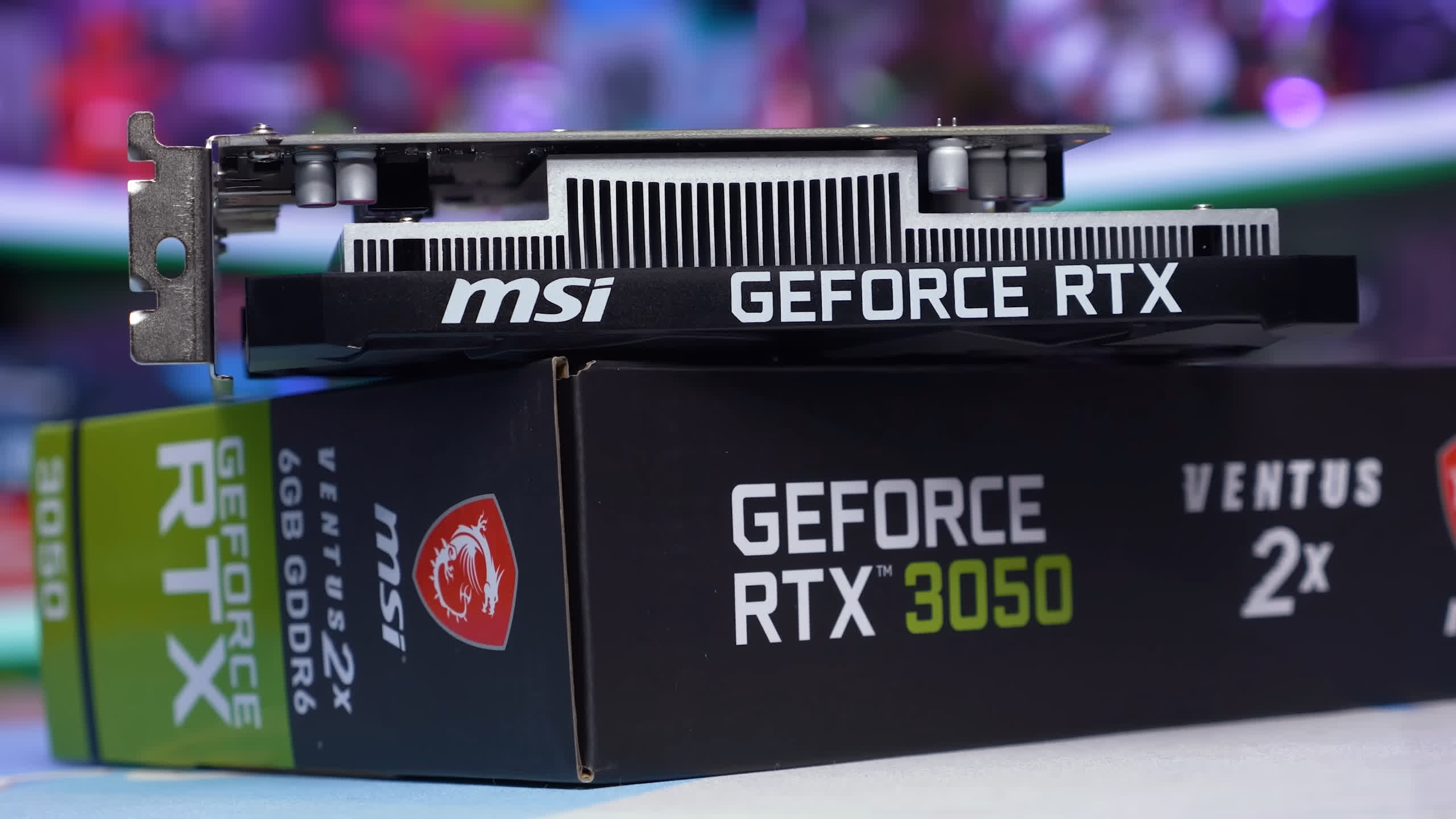The GeForce RTX 3050 6GB is an interesting new release from Nvidia targeting the sub-$200 market. Now, the interesting part is not so much for its performance as it is for other factors which we'll detail in this introduction to give proper context on this GPU as we'll need to cover a few different angles.
First, let's get the dodgy naming out of the way. The 6GB RTX 3050 isn't simply the original RTX 3050 8GB model with 2GB of VRAM removed. Instead, it's a significantly cut down product in almost every way. Whereas the original model, released two years ago, is based on the GA106 silicon, the new 6GB variant utilizes the GA107 which is almost 30% smaller.
This reduction results in a 10% decrease in core count, with two fewer SM units, leading to 10% fewer Tensor cores and RT cores. Furthermore, the cores are clocked 17% lower, reducing the boost from 1,777 MHz to just 1,470 MHz. These downgrades have led to a significant TDP reduction, from 130 watts to just 70 watts. This change is important as it means the RTX 3050 6GB doesn't require external power, a point we'll return to shortly.
About that 6GB VRAM buffer. While the 8GB model employs a 128-bit wide memory bus, the 6GB version omits a 2GB memory chip, narrowing the bus to 96-bit and consequently reducing the memory bandwidth by 25% to 168 GB/s.
In other words, although the 6GB and 8GB versions of the RTX 3050 share the same name, they are fundamentally different products, using entirely different silicon. Thus, potential buyers might think they are purchasing the same RTX 3050 with just 2GB of VRAM removed, when in fact, they are getting a substantially slower product.
This misleading practice is clearly anti-consumer, and that alone spoils the 6GB RTX 3050 for us. It would be more appropriate and reasonable to have named this product the RTX 3040 or 3040 Ti, avoiding confusion and setting realistic expectations. So we're not giving Nvidia a pass here, the naming is atrocious. But it's not another GT 1030 DDR4 situation, naming aside we might actually have a good product on our hands.
One reason is pricing. The RTX 3050 8GB was intended to be a $250 product, yet it rarely sold at this price and currently exceeds $300, severely undermining its value proposition. In contrast, the 6GB model has a suggested retail price of $170 and is presently available for $180, making it 40% less expensive than the 8GB model.
Pricing looks decent, but another positive aspect is power consumption. With a TDP of just 70 watts, the 6GB RTX 3050 doesn't need external PCI Express power; all necessary power can be supplied through the PCIe slot. Although this might not seem significant to most, as connecting 6 or 8-pin PCIe power is straightforward and the difference between a 70 watt and 130 watt TDP is negligible for many, it becomes pivotal for specific scenarios.
For instance, those who have picked up a cheap Dell Optiplex or similar OEM system, will find the 6GB 3050 revolutionary. These office-type PCs often come with proprietary power supplies lacking PCIe power connectors, making an installation of a more powerful graphics cards like the Radeon RX 6600 quite tricky.
Granted, this is niche use case and in most cases, it won't make sense. Moreover, the tech savvy amongst you will be able to get something like a Radeon RX 6600 working in such a system, either by buying an ATX wiring adapter, so you can use a normal power supply, or by jerryrigging your own power supply to the graphics card, and there are several low cost and effective ways in which this can be done, sometimes even using a DC power pack that you might already have and there are some great YouTube videos on how to do this.
While the 6GB RTX 3050 now holds the title of the world's fastest gaming graphics card that doesn't require external power, this distinction might not mean much to most. Nevertheless, we will consider this angle as we review the product.
What will ultimately matter to most is how the 6GB RTX 3050's performance at $180 compares with the slightly pricier Radeon RX 6600. There's also the new 8GB version of the 6500 XT to consider. However, despite being significantly better than its 4GB counterpart, it remains an unattractive option compared to the RX 6600.
For testing, we're using our Ryzen 7 7800X3D test system equipped with 32GB of DDR5-6000 memory and the latest display drivers. All data has been validated and updated for this review, with all GPUs tested at their base specification. In total, we've tested 13 games at 1080p using appropriate quality settings. Let's take a closer look at what we have…
Benchmarks
First up, we have Remnant II, where the 6GB 3050 is just 14% slower than the original version. This is a significant margin for two products that share the same name, but based on the specs, one might have expected a larger gap between the two. It was slightly slower than the 8GB version of the 6500 XT but also a notable 46% faster than the RX 6400, AMD's fastest GPU that doesn't require external power.
If you're not concerned about external power, then trailing the RX 6600 by a 35% margin will likely be problematic for the 6GB RTX 3050.
In tests with The Last of Us Part I, we again find the 6GB RTX 3050 not too far behind the 8GB model, showing a 14% slower performance. It also delivers twice the performance of the RX 6400, though it is almost 30% slower than the RX 6600.
In Starfield, the 6GB RTX 3050 averaged 36 fps using the lowest quality settings at 1080p, making it 16% slower than the RTX 3050 8GB but almost 40% faster than the RX 6400. Again, however, it was a little over 30% slower than the RX 6600.
Testing with Resident Evil 4, we find the 6GB version of the RTX 3050 to be 23% slower than the 8GB model, matching the performance of the 4GB 6500 XT. This made it 27% faster than the RX 6400. However, it was a significant 54% slower than the RX 6600, as the RDNA2 GPU performs very well in this title. This demonstrates instances where RDNA2 GPUs can match or outperform RDNA 3 GPUs in certain scenarios.
Next, we have Ratchet & Clank: Rift Apart, where the 6GB RTX 3050 rendered 61 fps on average, making it 21% slower than the 8GB model and 41% slower than the RX 6600. Compared to the RX 6400, however, it was a massive 56% faster, offering a significant upgrade for those needing a GPU without external power.
Testing with Star Wars Jedi: Survivor, the 6GB model was 22% slower than the original, averaging just 45 fps, but still a substantial 32% faster than AMD's RX 6400. For those seeking the best value, and if external power is not a concern, the RX 6600 offers nearly 40% more performance in this title for roughly the same cost.
In Forza Motorsport, the performance between the 6GB and 8GB models was fairly similar, with the more affordable 6GB version trailing by 11%. This meant it was 62% faster than the RX 6400, a remarkable improvement, though still 24% slower than the RX 6600.
Cyberpunk 2077: Phantom Liberty saw the 6GB 3050 averaging 58 fps, 24% slower than the 8GB model, indicating a significant performance drop. Even so, it utterly surpassed the RX 6400, offering 71% more performance. Yet, it was still 36% slower than the RX 6600, reinforcing the 6600 as the better value option if external power can be provided.
In Hogwarts Legacy, the 6GB RTX 3050 performed on par with the 4GB 6500 XT, making it 20% slower than the 8GB version but still 31% faster than the RX 6400. However, without the need for a GPU without external power, the RX 6600 delivers almost 60% more performance for approximately the same price, making it the preferable choice depending on the user's requirements.
Testing with Avatar revealed the 6GB model to be 22% slower than the original, a considerable margin. Due to what appears to be ray tracing use even at the lowest quality settings, the RX 6400 significantly underperformed, making the 6GB RTX 3050 nearly twice as fast. Nonetheless, it was still 33% slower than the RX 6600.
In Assassin's Creed Mirage, the 6GB RTX 3050 averaged 70 fps, comparable to the Arc A580 and RX 5500 XT. In this case, it was only 15% faster than the RX 6400, a modest margin relative to the significant advantages seen in almost every other title tested.
With Alan Wake 2, the 6GB RTX 3050 managed just 31 fps on average, not remarkable performance given the 1080p resolution and lowest quality settings, but still 55% faster than the RX 6400, despite being 23% slower than the 8GB model.
Lastly, in Counter-Strike 2, the 6GB version was 15% slower than the original, averaging 178 fps, which is still excellent overall performance. This level of performance is comparable to the 6500 XT 4GB and even the older 5500 XT, but amazingly, it still represents a 16% improvement over the RX 6400.
Average Performance
Here's the 13-game average: the 6GB RTX 3050 was 18% slower than the 8GB model, a significant margin that is certainly problematic considering they share the same name. The 6GB model was also slightly slower than the 8GB 6500 XT but 25% faster than the 4GB version. As noted in a recent feature that looked at VRAM, 4GB of VRAM is insufficient for modern gaming, even at 1080p using the lowest quality settings.
Compared to AMD's fastest GPU that doesn't require external power, the RX 6400, the 6GB 3050 is a remarkable 50% faster, outperforming it significantly. However, AMD takes the lead for budget-conscious gamers who can manage external PCIe power connectors, as the RX 6600 is 53% faster than the 6GB RTX 3050, likely offering much better value. Let's explore this further.
Cost per Frame
As expected, the RX 6600 retains its title as the best value entry-level gaming GPU, given that the 6GB RTX 3050 costs an excessive 38% more per frame. Unless required for a low-powered application, the new GeForce GPU presents poor value.
One could argue that for those with the option for external PCIe power, the 8GB version of the 6500 XT also offers better value, costing 14% less per frame and being marginally faster. It also includes an extra 2GB of VRAM, but like the RX 6400, it is limited to just two display outputs, PCIe x4 bandwidth, and lacks hardware encoding.
For us, the slight savings on the 8GB 6500 XT, which is expected to be priced at $160, do not justify its purchase. With $160 intended as the starting price, any price above this renders it unattractive.
For low-powered applications, it's marginally better value than the RX 6400, but given that the Radeon GPU only averaged 40 fps, and the 6GB 3050 achieved 60 fps, we'd argue it offers much greater value than the cost per frame might suggest. The GeForce GPU also benefits from more VRAM, double the PCIe bandwidth, support for more than two display outputs, and includes hardware encoding.
Compared to the 8GB RTX 3050, the new 6GB version is almost 30% better value per frame, marking a significant improvement. Although we disapprove of the naming strategy Nvidia has chosen, as it is consumer-unfriendly, the unexpected advantage here ends up being better value, even if it's noticeably slower. So it's difficult to go hard on them here, even if it is a bit dodgy.
Power Consumption
Here's a quick look at total system power draw. Interestingly, in Cyberpunk 2077, the 6GB RTX 3050 and the 4GB 6500 XT consumed a similar level of power, or at least the total system power consumption was similar. Consumption was also 20% higher than that of the RX 6400, but performance was also 71% greater. In terms of efficiency, the Radeon GPU gets annihilated, and so does the 4GB 6500 XT.
For the most part, we observed similar margins in Assassin's Creed Mirage. Again, the 6GB RTX 3050 had a similar power draw to the 6500 XT and was 6% faster in this title. Compared to the RX 6400, the power draw for the 6GB 3050 was 13% higher, but its performance was also 15% greater. So efficiency is significantly better for AMD in this title.
Temperatures
Now for a quick look at operating temperatures and clock speeds. For all our testing, we purchased the MSI Ventus 2x version of the 6GB RTX 3050. After an hour of load in an enclosed ATX case with an ambient room temperature of 21°C, we observed a peak hot-spot temperature of 72°C, which is acceptable, though the 2,000 RPM fan speed was a bit loud, and the card could be clearly heard over our case fans.
In this test, we saw an average clock speed of 1,650 MHz, and the memory ran at the expected 1,750 MHz. Regarding overclocking, there's no headroom as you're limited by the power through the PCIe slot. The power slider is locked at 100%, and attempting to squeeze out an extra 100 MHz resulted in crashes.
What We Learned
We've got mixed feelings about the RTX 3050 6GB. The naming choice is certainly problematic; calling this an RTX 3050 is very misleading. The RTX 3050 was released two years ago as a GA106 part, and its performance and specifications are well established.
To introduce a GA107 part under the same name and muddy the waters is questionable. Of course, it's not only Nvidia engaging in funny buggers with product names; recently, we addressed AMD's confusing naming with the Ryzen 7 5700, which contrary to expectations is a 5700G with the iGPU disabled, making it a much slower part than its name suggests.
We've witnessed various degrees of misleading product naming from Nvidia over the years. In the case of the 6GB RTX 3050, while it's one of the less severe instances and the product itself is quite good, it would have been more appropriate if it had been named the RTX 3040.
Now, when we say it's a good product, generally speaking it's decent. To consider it good or great, you must be interested in its ability to operate without external power – a niche use case but one that exists. As a standard gaming product, it's passable but not exceptional.
For just $20 more, the Radeon RX 6600 offers significantly better value, delivering over 50% more performance on average, more VRAM, and a superior gaming experience overall, even allowing for 1440p gaming.
So there you have it, the RTX 3050 6GB isn't as outrageous as we had anticipated. What are your thoughts on this GPU? Feel free to share your opinions in the comments below.
